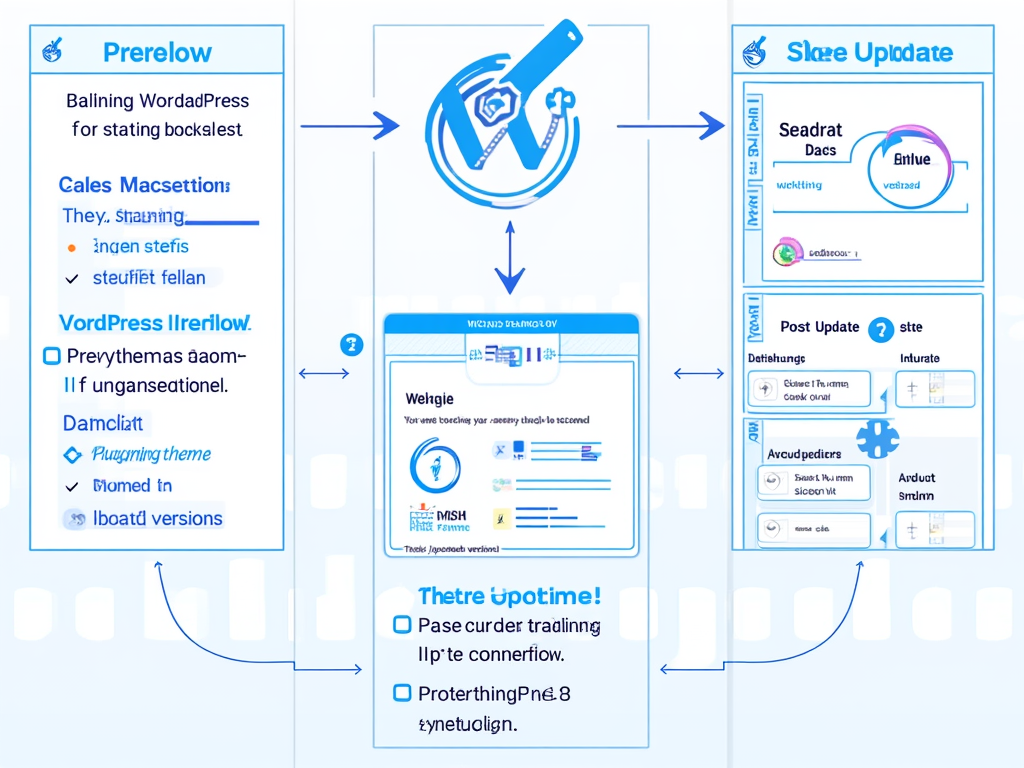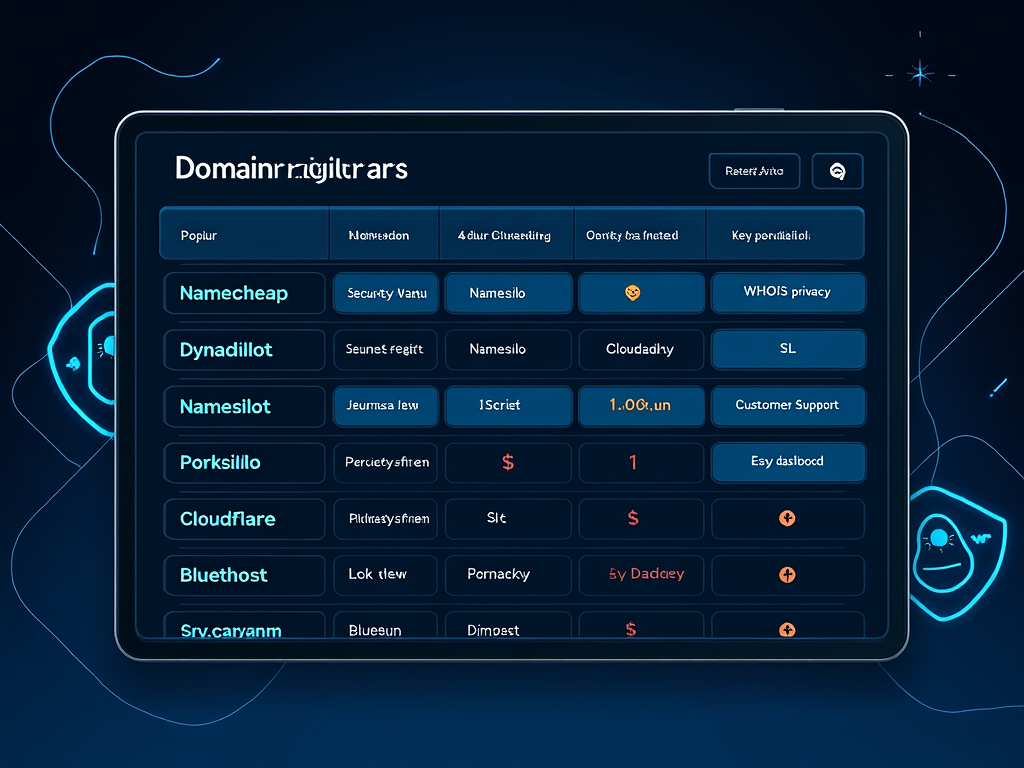<h1>What Is Malware Scanning in Web Hosting?</h1>
## Introduction
Malware scanning in web hosting is a crucial line of defense in today's digital landscape. As guardians of our online fortresses, these scanning processes work tirelessly behind the scenes, diligently inspecting website files, servers, and cloud resources for harmful software. Just like a well-oiled machine, malware scanners identify, analyze, and neutralize threats that can wreak havoc on your online presence.
Imagine pouring your heart into creating a beautiful, functional website, only to have it crippled by a nasty malware infection. AVERTED! Let’s delve deeper into what malware scanning entails, exploring its significance, functionality, and best practices.
## What Is Malware Scanning in Web Hosting?
Malware scanning refers to both automated and manual processes involved in sifting through the chaos of website files, databases, and servers to uncover malicious software or suspicious code. These meticulous checks are performed using various techniques:
- **Signature-based detection:** This method compares files against a database of known malware fingerprints, ensuring that common threats are swiftly identified.
- **Heuristic analysis:** Here, the focus is on recognizing suspicious behavior or anomalies typical of malware activity.
- **Machine learning algorithms:** Employing cutting-edge technology, some advanced scanners learn from previous infections to detect new, unseen threats.
Imagine being in a dark room, and suddenly, a light flickers, illuminating potential dangers lurking around. That’s what effective malware scanning does—shining a light on vulnerabilities critics often overlook.
**Periodic and Continuous Scans
To ensure ongoing protection, scans can occur regularly—be it daily, weekly, or in real-time. This vigilance minimizes the chances of surprise breaches that can disrupt business operations. Furthermore, proactive threat responses are set in place, where detections may trigger automatic quarantine of infected files or alerts to administrators for manual intervention.<br>
### Why is Malware Scanning Important in Web Hosting?
Why should you care? Here are a few compelling reasons:
- Protecting both website owners and the hosting provider’s infrastructure is essential to maintain operational integrity.
- Malware can cause disruptions, such as slowdowns or even defacements, often triggering waves of frustration.
- The reputation of your business hangs in the balance; nobody wants a site riddled with malware attracting unwanted scrutiny from search engines and users alike.
- Infection containment is crucial, especially on shared hosting environments where one infected site can compromise multiple others.
Picture a bustling marketplace—where one stall is infected with a pest; soon, all the stalls risk becoming contaminated. Thus, a comprehensive malware scanning strategy is vital for website health.
Take, for instance, Pagely, a managed WordPress hosting provider that developed Malwatch. By improving detection rates by 15% and reducing CPU usage by 14%, they exemplify how efficient and resource-aware scanning solutions can have a massive impact—a reassuring fact for anyone navigating the turbulent waters of web hosting.
## How Malware Scanning Works and Best Practices in Web Hosting
### Core Components and Mechanisms
So, how does the magic of scanning work behind the scenes?
1. **File and Code Scanning:** The scanner delves into all files stored on the server—from PHP to JavaScript—analyzing them for malware signatures and suspicious code patterns.
2. **Real-Time Monitoring:** Some sophisticated scanners continuously monitor activities to pinpoint malware before it can execute or infiltrate files.
3. **Integration with Web Application Firewalls (WAFs):** By filtering incoming traffic, WAFs act as a barrier against specific types of malware attacks long before they reach your precious files.
4. **Cloud and External Scanning:** Some scanners operate externally from the hosting environment, adding an extra layer of security without compromising system resources.
Now, to get the most out of these scans, here are several best practices:
- **Utilize a combination of automated scanning tools and manual oversight:** While automated scanners quickly detect visible threats, human checks can catch complex issues or newly emerging malware patterns, adding depth to your security strategy.
- **Select scanners with minimal server impact:** Opt for remote or cloud-based scanners that leverage their resources, ensuring that your website’s loading speeds remain unaffected during scans.
- **Schedule regular scans:** Setting up daily or weekly examinations helps quickly nab fresh threats when they surface.
- **Employ layered security:** Combine scanning with WAFs, adhere to secure coding practices, and maintain up-to-date software.
- **Be responsive:** In the event malware surfaces, act without delay—quarantine files and clean infections promptly. Remember, every second counts in minimizing potential damage.
In the realm of WordPress hosting, you’ll find specialized malware scanners available as plugins tailored to assess the CMS for specific vulnerabilities and malware types. For those using cPanel hosting, familiar tools like ClamAV are your allies in the quest for a secure online presence.
### Emerging Approaches
Innovation is the name of the game. As cyber threats evolve, so too must our approaches to combating them:
- AI and machine learning technologies are enhancing heuristic detection capabilities, enabling the identification of unknown threats by recognizing bizarre traffic patterns or unusual file changes.
- SaaS-based malware scanning platforms now offer APIs that allow seamless integration, letting hosting providers and businesses automate the entire threat detection and remediation workflow.
### Visual Elements Suggestion
A comparative table can be devised to illustrate typical malware scanning tools for hosting environments:
<table>
<tr>
<th>Tool</th>
<th>Approach</th>
<th>Hosting Integration</th>
<th>Key Feature</th>
</tr>
<tr>
<td>ClamAV</td>
<td>Signature-based scanning</td>
<td>cPanel / Linux Servers</td>
<td>Open-source, server-side scan</td>
</tr>
<tr>
<td>Malwatch</td>
<td>Signature + resource efficient</td>
<td>Managed WordPress Hosts</td>
<td>High detection, low CPU usage</td>
</tr>
<tr>
<td>SiteLock</td>
<td>Automated daily scanning</td>
<td>Cloud/website level</td>
<td>Continuous scanning + WAF</td>
</tr>
<tr>
<td>MalCare</td>
<td>WordPress CMS specific</td>
<td>WordPress Plugins</td>
<td>Easy malware removal, alerts</td>
</tr>
</table>
BEST OFFERS:
Do you want to create your own company website or create your own online business on the Internet?
– WEB HOSTING
– DOMAIN REGISTRATION
– WEB DEVELOPMENT
– SITE BUILDER



“`html
The Importance of Regular Updates and Maintenance
One of the cornerstones of effective malware scanning is maintaining the software and tools you use. Just as a perennial gardener tends to their plants, website owners must regularly prune and update their tools to keep threats at bay.
Why Updates Matter
When plugins, themes, and core software remain outdated, they become vulnerable points, ripe for exploitation. Each new update typically includes security patches and fixes that directly counteract recent vulnerabilities discovered by the cybersecurity community:
- Staying ahead of threats: Regular updates ensure you're leveraging the latest security measures available.
- Bug fixes: Each patch often addresses previous issues that attackers may exploit, improving the overall resilience of your website.
- Compatibility: Regularly updated software ensures smooth functionality between different elements of your hosting environment, reducing the risk of failures during critical operations.
By staying current with updates, you also facilitate an efficient malware scanning process, as many modern tools will integrate seamlessly with the latest versions, allowing for improved detection and performance.
Choosing the Right Hosting Provider
Selecting a reliable hosting provider is akin to finding the right neighborhood for your new home. You want a place that offers security, trust, and additional protective features:
- Security features: Most reputable hosts integrate malware scanning solutions directly into their offerings. Look for those employing advanced technology and a robust plan for regular malware checks.
- Support and responsiveness: Evaluate customer service reliability. A host with a prompt support system can provide timely insights during security incidents.
- Backup solutions: Proper backup options are essential. In the unfortunate event of malware infection, a reliable backup allows for quick restoration, reducing downtime and loss.
Such measures in place maximize your peace of mind, letting you focus on what truly matters—your content, customers, and growth!
Educating Users on Best Practices
While technical tools are crucial in protecting your online assets, don’t underestimate the power of human awareness. Educating users on best practices can significantly reduce the chances of malware infiltration. Here’s how:
- Training content creators: Ensure that everyone who engages with the website understands the basic principles of cybersecurity. Regular training sessions can raise awareness about phishing attacks, suspicious links, or unsafe downloads.
- Regular briefings: Share updates about new security threats and how to handle them. Keeping team members in the loop fosters a culture of vigilance and caution.
- Encouraging strong passwords: Advocate using complex and unique passwords, coupled with two-factor authentication to further enhance security.
Imagine a well-oiled machine, where every cog and wheel operates in sync. User awareness not only boosts the effectiveness of your malware scanning efforts but also transforms your team into an active line of defense.
Final Thoughts on Malware Scanning
As we navigate this intricate digital world, malware scanning emerges as an indispensable tool to safeguard website integrity. Through a combination of thorough scanning mechanisms, vigilance in updating, and a proactive educational approach, we collectively nurture a safer online environment.
Investing in robust scanning tools, alongside periodic inspections and maintaining a broad security approach, empowers you to stand resilient against the ever-evolving nexus of cyber threats. The goal is to not only protect your website but also to ensure the trust and safety of everyone who interacts with your digital space.
In the realm of cybersecurity, knowledge is your shield, and vigilance is your sword. Stand tall, armed with awareness and technological prowess, and together, let’s forge ahead toward a more secure online future. The essence of protective fortification lies not merely in the tools but in the masterful deployment thereof.
Related Video Links
For a deeper understanding of effective malware scanning strategies and practices, check out these videos:
- What is Malware Scanning? | Understanding the Basics
- Website Security Best Practices | Protect Your Site from Malware
- How to Choose a Secure Web Hosting Provider
With vigilance and the right tools, your website can become a resilient entity, continually evolving and adapting to meet the challenges of the digital age. Stay safe, stay informed, and empower your web presence!
References
1. Source 1
2. Source 2
3. Source 3
4. Source 4
5. Source 5
6. Source 6
7. Source 7
8. Source 8
BEST OFFERS:
Do you want to create your own company website or create your own online business on the Internet?
– WEB HOSTING
– DOMAIN REGISTRATION
– WEB DEVELOPMENT
– SITE BUILDER








Leave feedback about this